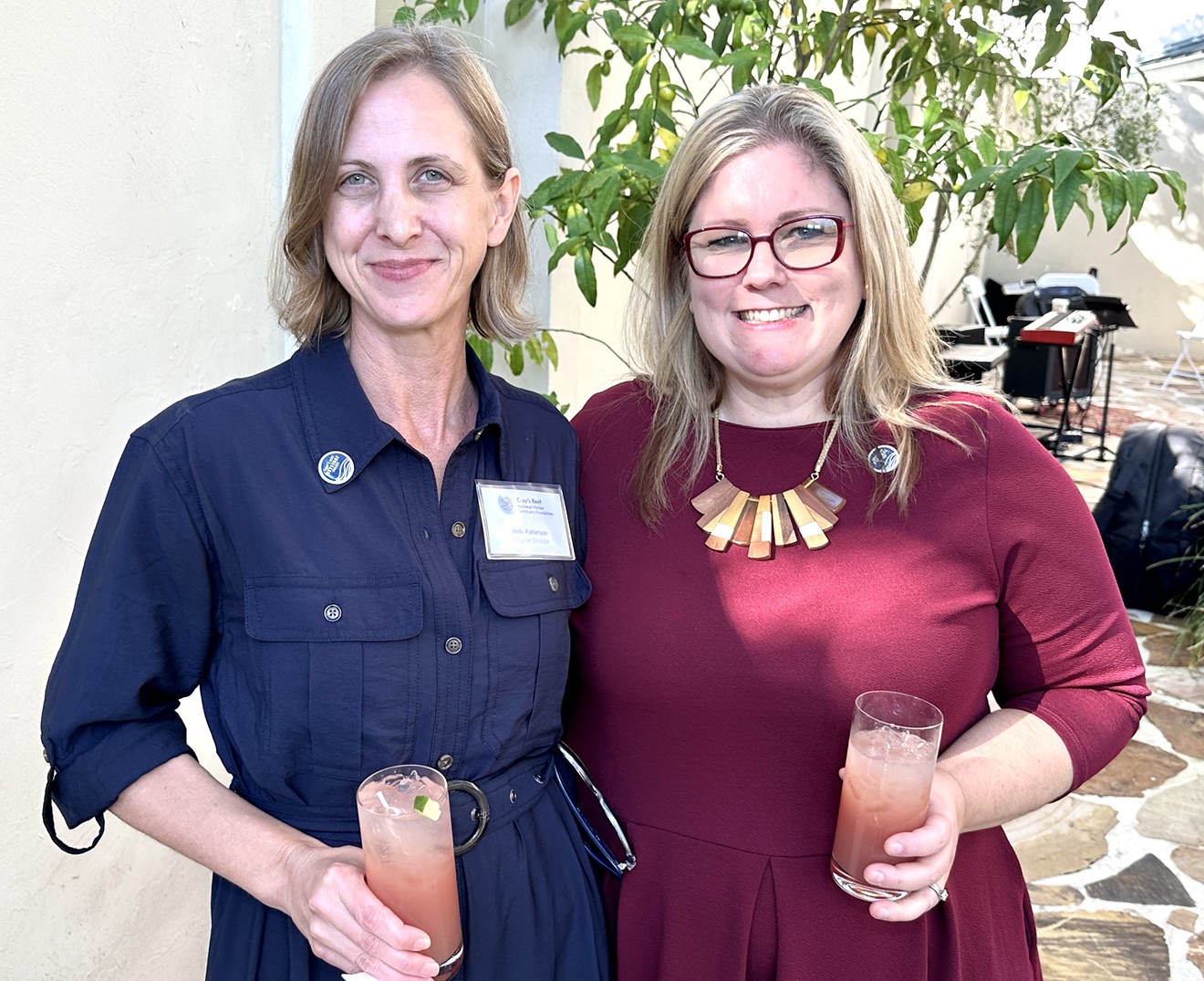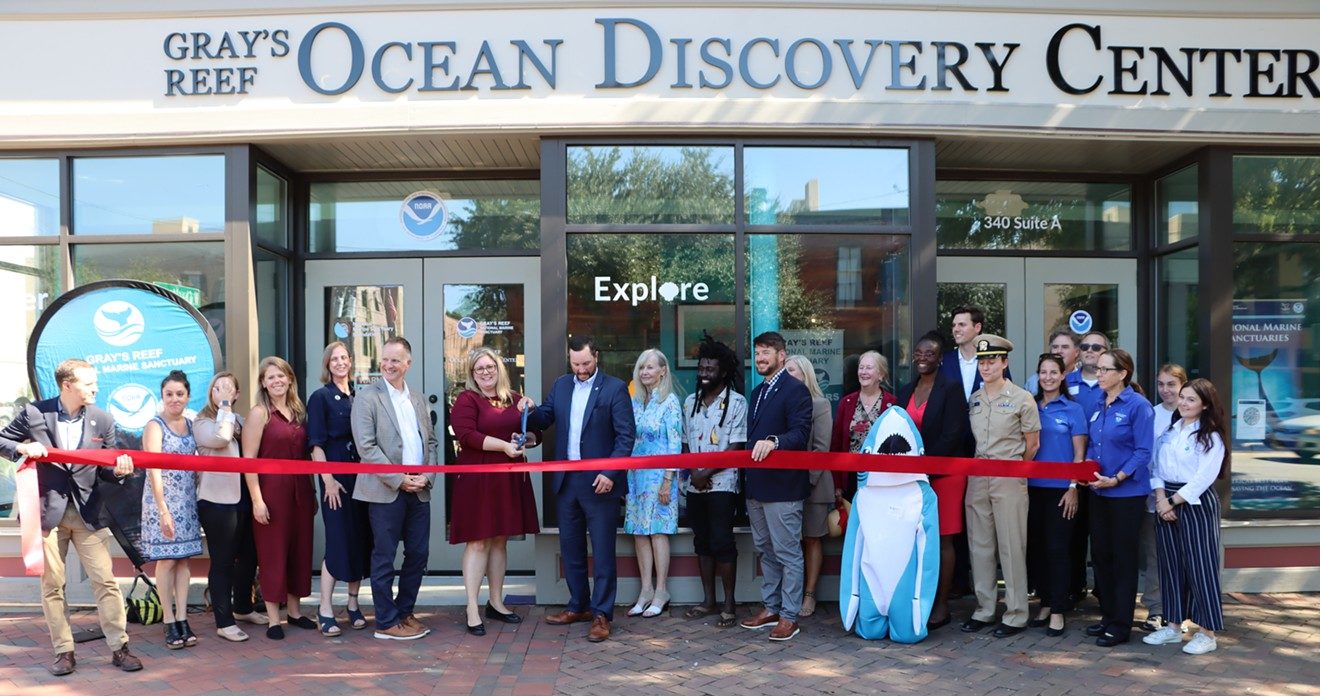
50th anniversary Save Spectacular Celebration
NOAA Gray’s Reef National Marine Sanctuary and the Gray’s Reef Chapter of the National Marine Sanctuary Foundation, celebrated the 50th anniversary for national marine sanctuaries with a “Save Spectacular Celebration”. This double celebration included the ribbon cutting and dedication of the new Gray’s Reef Ocean Discovery Center, followed by tours of the facility and a soiree for Chapter members and honored guests.
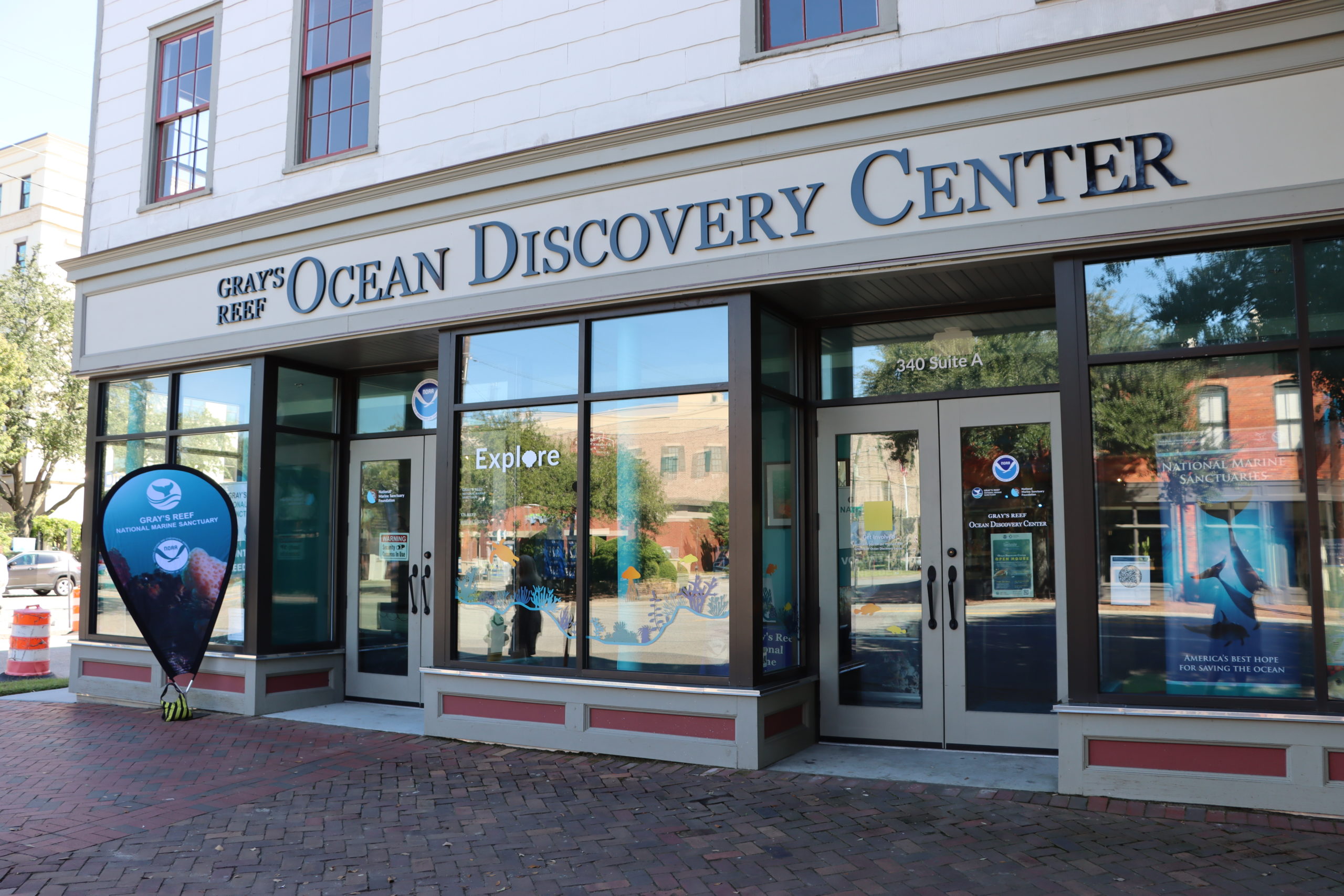
Introducing the Gray's Reef Ocean Discovery Center
Celebrating the 50th anniversary of the National Marine Sanctuary program, the Gray’s Reef National Marine Sanctuary and the Gray’s Reef Chapter of the National Marine Sanctuary Foundation cut the ribbon on the new Gray’s Reef Ocean Discovery Center on Saturday. Located at 340 Martin Luther King Jr. Blvd. in Savannah, the discovery center will welcome visitors to learn more about the underwater wonders of the reef through free programs, activities, and opportunities to volunteer.
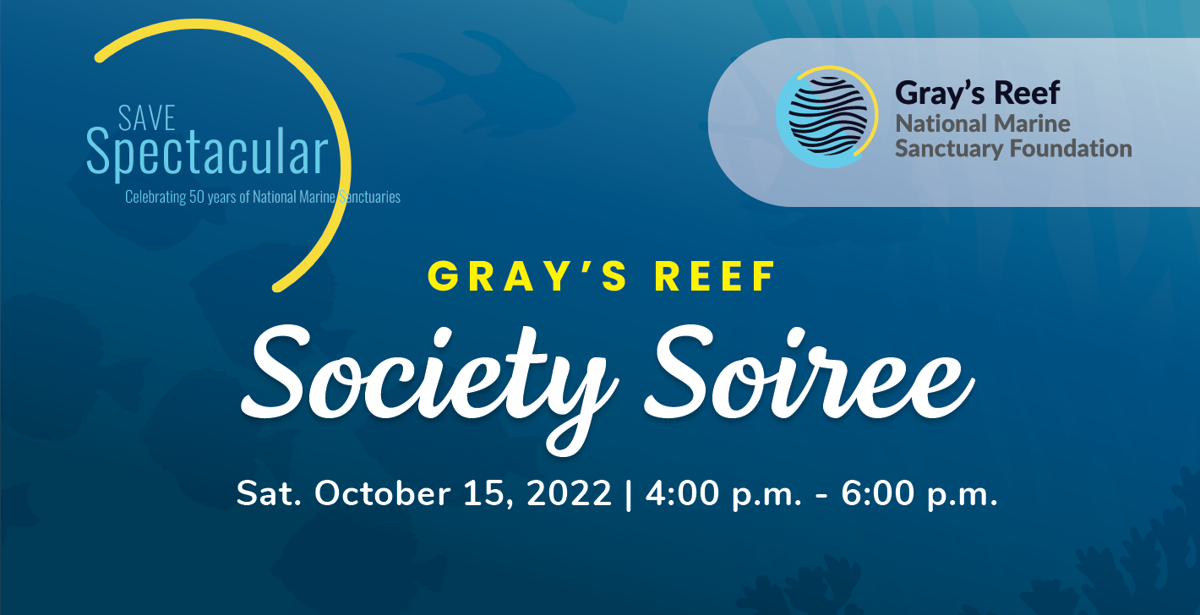
Gray's Reef Society Soiree celebrates 50th anniversary and launch of Ocean Discovery Center
Gray’s Reef National Marine Sanctuary Foundation hosted the “Save Spectacular Celebration”, which included an elegant soirée for members and sponsors at the SCAD Pei Ling Chan Gallery in Savannah. This exclusive Soiree invited new and existing Foundation members to celebrate the 50th anniversary for national marine sanctuaries and new Gray’s Reef Ocean Discovery Center.
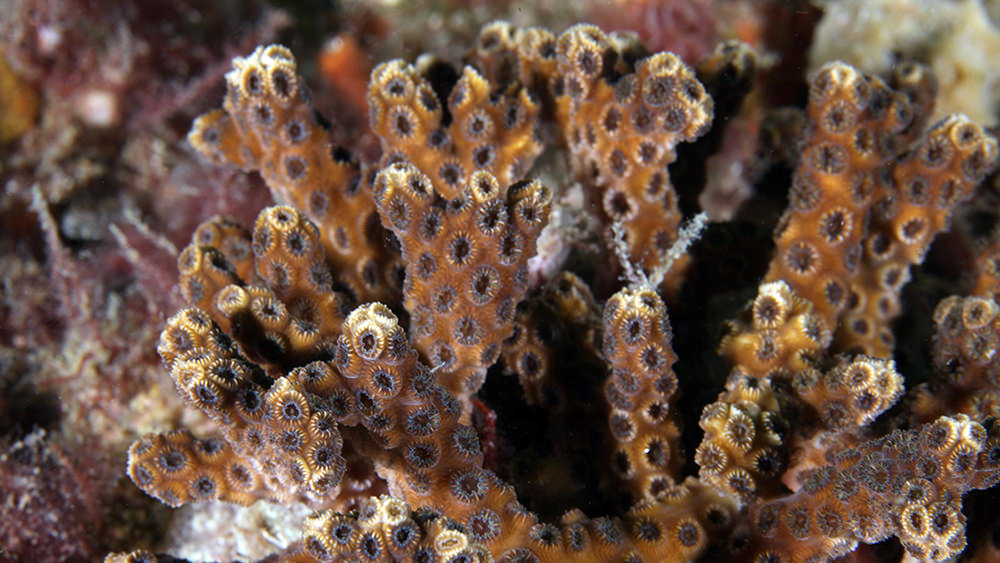
Scientist work to better understand how ocean acidification will affect marine life
Visitors to Gray’s Reef National Marine Sanctuary, off the coast of Georgia, may spot loggerhead turtles, dolphins, or even a whale. And below the surface, hundreds of species live in the nooks and crannies of the rocky sea floor. “Things like sponges and sea squirts and things called … moss animals, and corals. And all of these organisms encrust the bottom,” says Danny Gleason, director of the Institute for Coastal Plain Science at Georgia Southern University.
He says this invertebrate community supports other marine life by providing food, creating habitat, and filtering water. But oceans have absorbed about a third of the carbon pollution that humans have added to the atmosphere. The extra CO2 makes the water more acidic, which harms animals such as oysters, shrimps, and corals. Yet Gleason says much about the effects of acidification remains unknown.
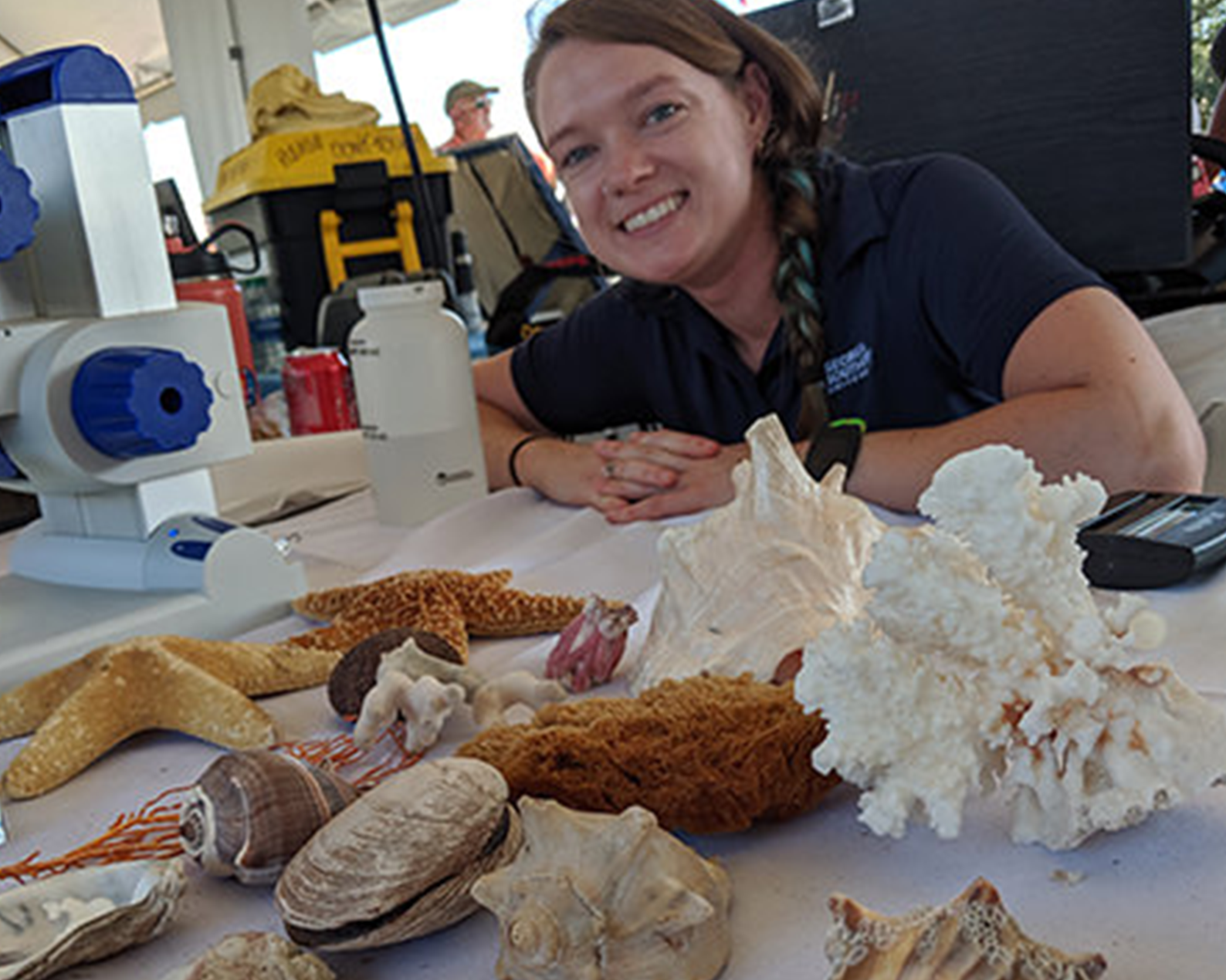
Dr. Nancy Foster scholar Erin Arneson examines coral resilience to ocean acidification
Office of National Marine Sanctuaries
Diving at Gray’s Reef National Marine Sanctuary, one thing is obvious: it’s a hidden treasure. A patchwork of Oculina corals alternates with colonized rock to form the sanctuary’s hard bottom reef. Multitudes of marine organisms — from small zooplankton and jellies to larger predators like fish and sharks — inhabit the reef.
But this idyllic haven for marine fauna is not untouched by changing ocean conditions. The ocean constantly absorbs carbon dioxide from the atmosphere, and with carbon dioxide levels increasing, the ocean is becoming more acidic — a phenomenon called ocean acidification. Dr. Nancy Foster Scholar Erin Arneson devotes her time to determining how this ecosystem can stay healthy despite the dangers of ocean acidification.
For her master’s in biology at Georgia Southern University, Arneson runs laboratory and field experiments to see how ocean acidification impacts a species of coral called Oculina arbuscula. Her studies are supported by the NOAA Dr. Nancy Foster Scholarship Program, which provides support for master’s and doctoral degrees in sanctuary-related ocean sciences.
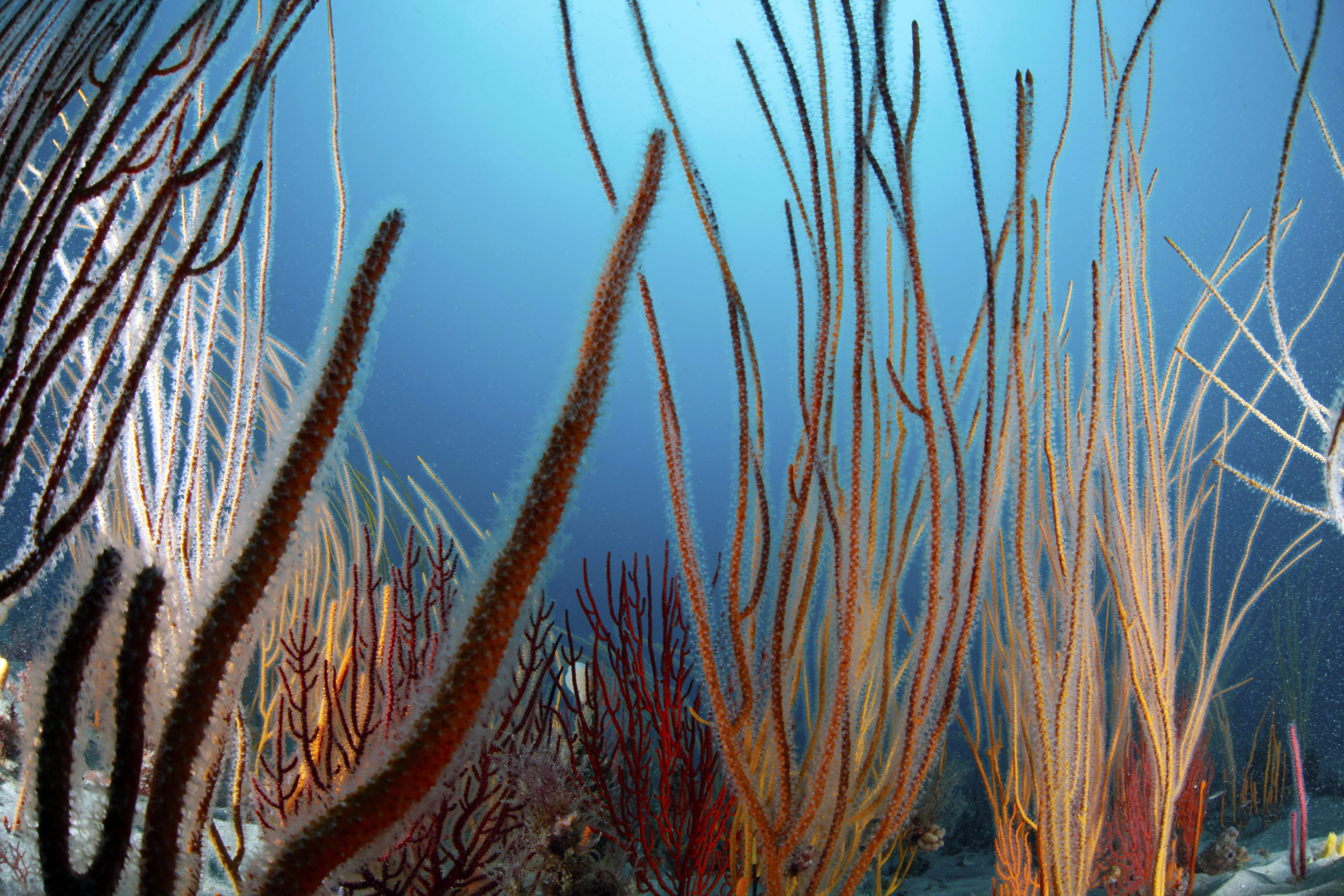
Oh Snap! What tiny shrimp can tell us about habitat health
Office of National Marine Sanctuaries
When asked to think of loud animals, we gravitate towards the big ones: the roar of a lion, the trumpet of an elephant, and, underwater, the song of the mighty blue whale. But in many underwater environments, the smallest animals are among the loudest. Snapping shrimp, or pistol shrimp, live in a variety of different shallow water ocean places, from coral reefs to temperate kelp forests to sponge dominated and rocky bottom habitats. They measure in at a couple of centimeters, yet their snapping claw can grow to be half the size of their body. When closed, the claw’s hinge produces a bubble which bursts and makes a loud snap sound. At 183-210 decibels, this makes them some of the loudest sound producers in the ocean.
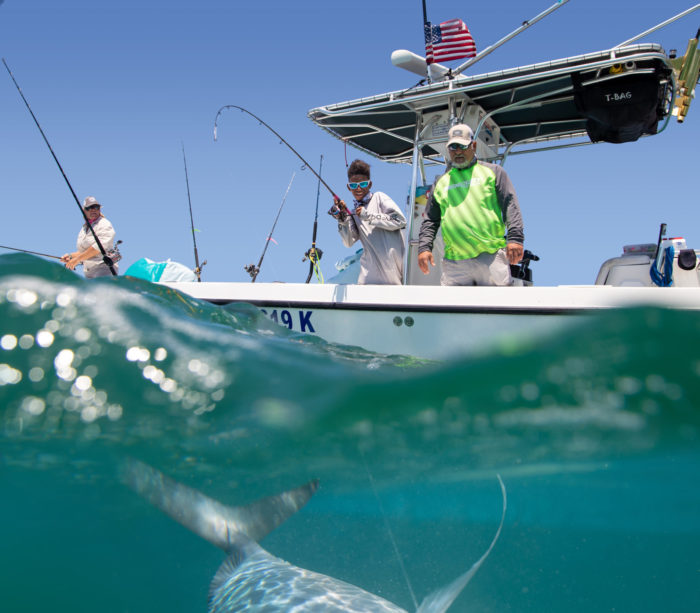
Gray's Reef Fishing Experience
National Marine Sanctuary Foundation
On August 5, Gray’s Reef National Marine Sanctuary launched their new online best fishing practices guide to help anglers fish responsibly, get involved in citizen science projects, and make the most of their visits to Gray’s Reef. In this guest blog, we spoke with Bob Crimian, the Southeast Ocean Conservation Specialist for The Nature Conservancy and a member of the Gray’s Reef National Marine Sanctuary Advisory Council, to learn more about the Gray’s Reef Fishing Experience.
The goal behind creating the experience was to have a guide for anglers (especially those who are new to offshore fishing and/or new to fishing in Georgia) to inform them about Gray’s Reef National Marine Sanctuary, the fishing opportunities there, the best fishing practices to use for catching bottom fish like snappers and groupers, and the opportunities to be involved in citizen science efforts. Before the COVID-19 pandemic, we were having in-person workshops to create an interactive way to provide this information. So instead of meeting in person (which wasn’t an option), we created this dynamic, multimedia experience that anglers can access on Gray’s Reef’s website whenever they want.
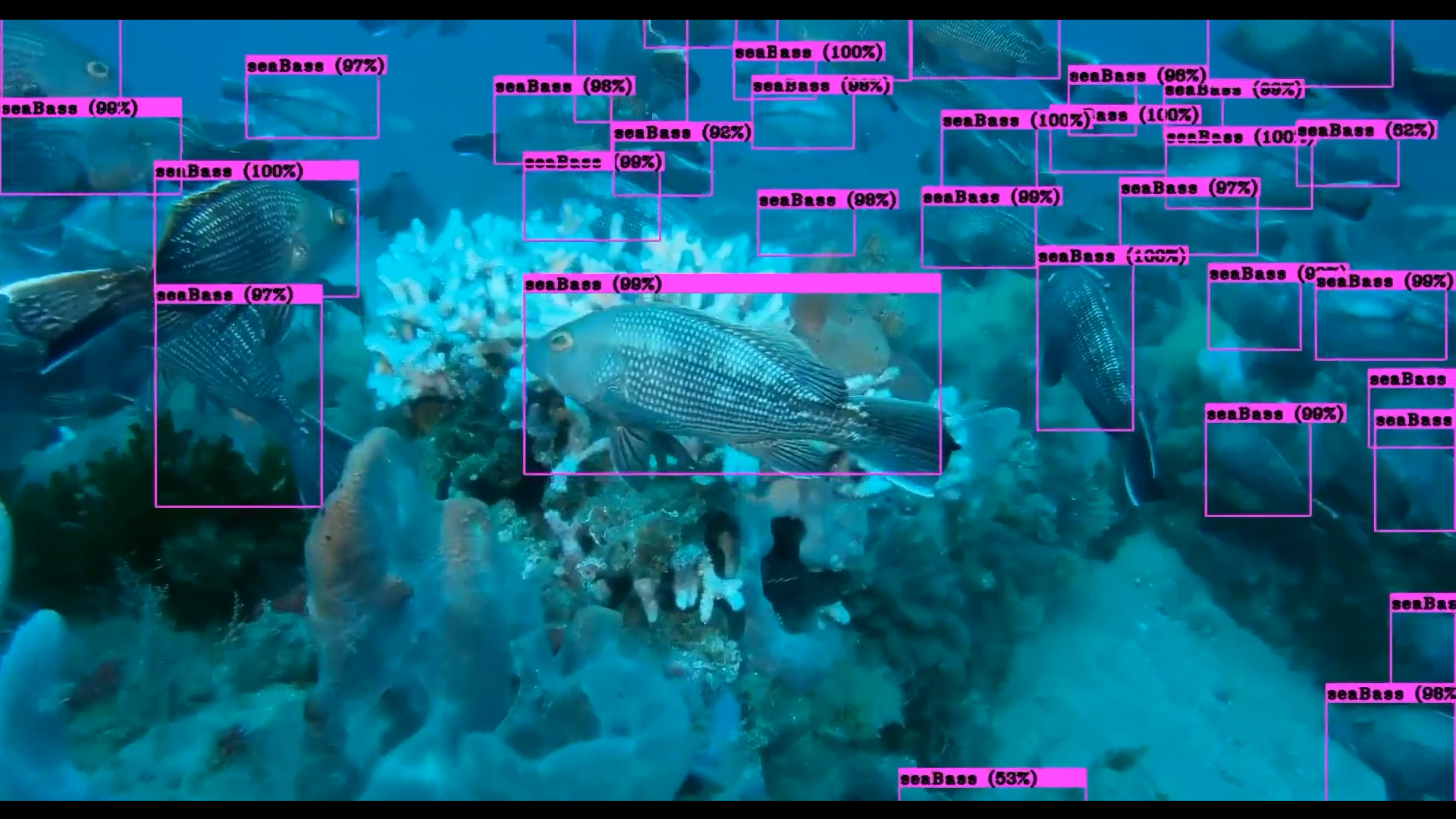
2021 Machine Learning Computer-Coding Challenge
The Journal of Ocean Technology
The MATE ROV Competition challenged students around the globe to use the Microsoft Azure AI Platform to create computer programs capable of evaluating marine organisms in benthic video transects. This was the second time the MATE ROV Competition and Microsoft partnered on a project designed to expose students to machine learning and encourage them to understand and apply AI to solving real-world, ocean-related problems. The 2021 challenge was more specific and involved in-depth learning and applications to create programs that analyzed benthic video transects and output data based on specific tasks. Video transects were provided by the Monterey Bay Research Institute (MBARI), the U.S. National Oceanic and Atmospheric Administration Gray’s Reef National Marine Sanctuary, and Coral Morphologic, a non-profit organization whose mission is to create innovative underwater media that chronicles Earth’s imperiled coral reefs. For each round, students’ submissions were judged on the accuracy of their analysis.

Savannah Technical College Selected For MATE Underwater Robotics Training Program
Savannah Technical College Industrial Systems students will compete in an underwater robotics competition in Spring 2022 thanks to funding from a National Science Foundation (NSF) grant. The College was one of two community and technical colleges in the U.S. selected to participate in the first cohort that will compete in a brand-new level for the Marine Advanced Technology Education (MATE) Remotely Operated Vehicle (ROV) Competition.
Gray’s Reef National Marine Sanctuary Foundation is the local host of the Southeast Regional MATE ROV Competition, in partnership with MATE and NOAA Gray’s Reef National Marine Sanctuary.
“This grant gives Savannah Technical College students the opportunity to master high-end ‘blue tech’ skills,” said MATE Regional Competition Network Liaison and Gray’s Reef National Marine Sanctuary Foundation Director Jody Patterson. “We look forward to working with the College to provide skills training as it builds its student team. I’m excited to see what they can do!”
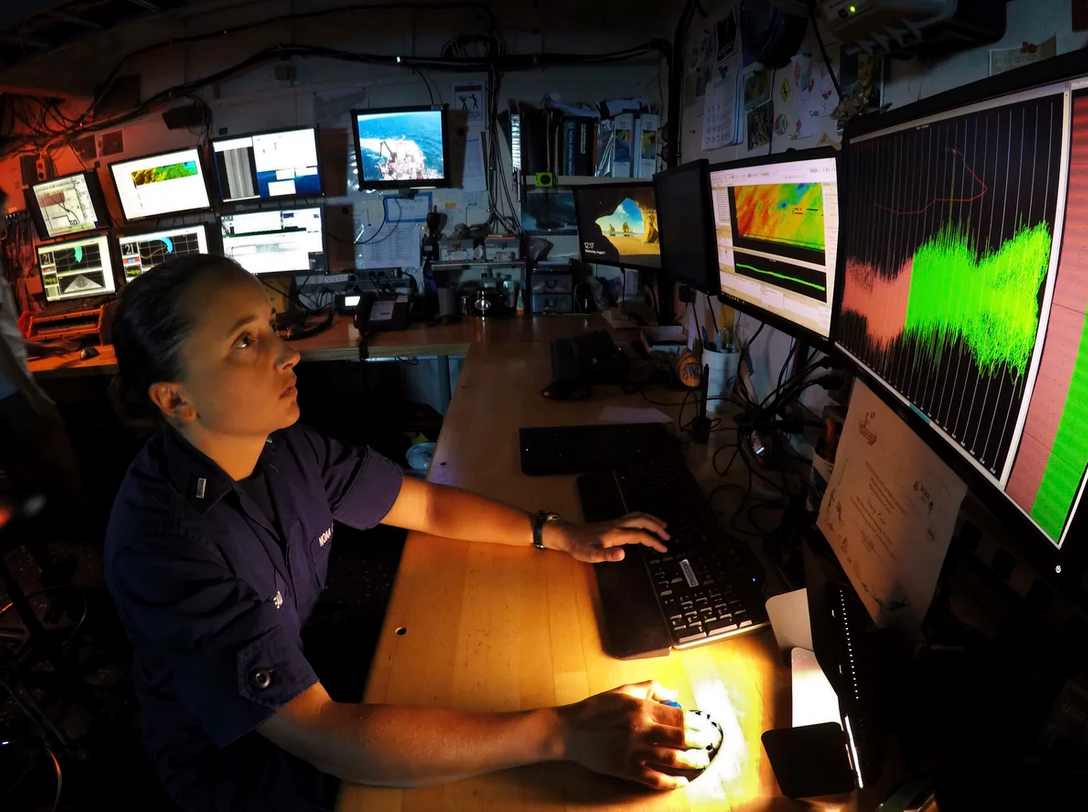
Rebuilding the Federal Workforce
The Biden administration says addressing climate change and health inequities are among its top priorities, and it will need to lean heavily on federal scientists to achieve ambitious goals. But decades of underfunding, political interference and systemic race and gender bias have undercut trust among many government scientists and have led to a disproportionately white, male workforce.
Recent reports by the Government Accountability Office and House Committee on Science, Space and Technology found that the federal government has not done enough to recruit and retain scientists who are women and people of color. Moreover, opaque hiring practices coupled with successive government shutdowns, hiring freezes and outright political censorship have damaged the federal government’s reputation among scientists, according to the GAO.
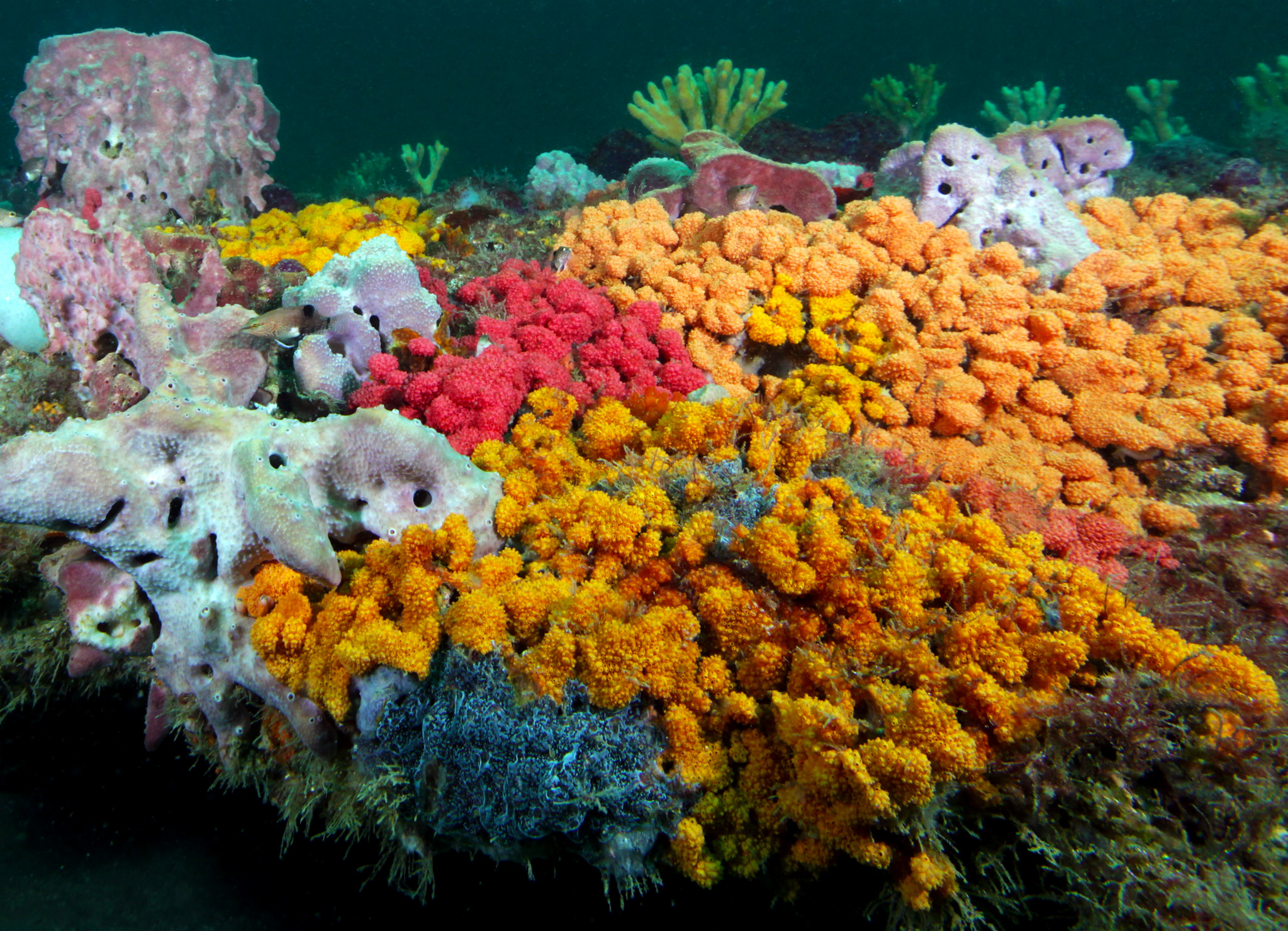
Georgia's Sublime Sanctuary
Off the coast of Savannah, Gray’s Reef is protected — but is still ours to explore. If you sailed 20 miles straight east off of Sapelo Island and gazed around the horizon, you would see nothing but a seamless view of water and sky. Sixty feet below the surface, however, there’s quite a party going on: A bottom landscape of rocky outcroppings and sandy sediment has played host to a dazzling array of marine flora, fish and the occasional massive sea turtle for more than 2 million years. Gray’s Reef National Marine Sanctuary covers 22 square miles of the ocean floor reaching all the way to the Continental Shelf, one of the largest off the Eastern seaboard. But few Savannahians know of its riches.
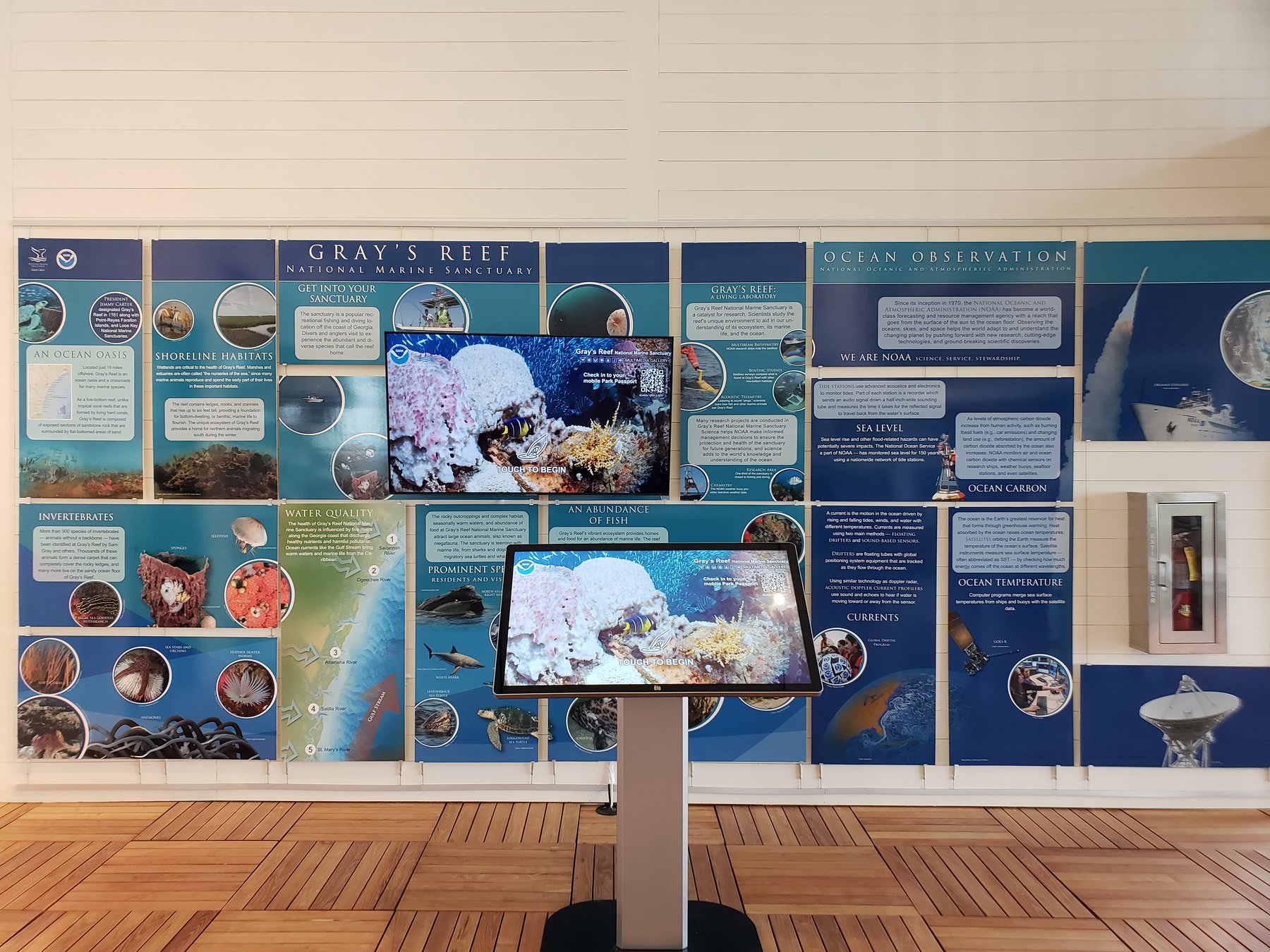
New Exhibits at Partner Locations
(Tybee Island, GA) Visitors to the Tybee Island Marine Science Center’s new facility are now able to virtually experience NOAA’S Gray’s Reef National Marine Sanctuary, from diving the live-bottom reef to observing the underwater creatures and coming up close and personal with a loggerhead sea turtle. The new Tybee Island Marine Science Center facility is the first of its kind in this region to feature a Gray’s Reef National Marine Sanctuary exhibit that offers visitors a chance to virtually experience the live-bottom reef.
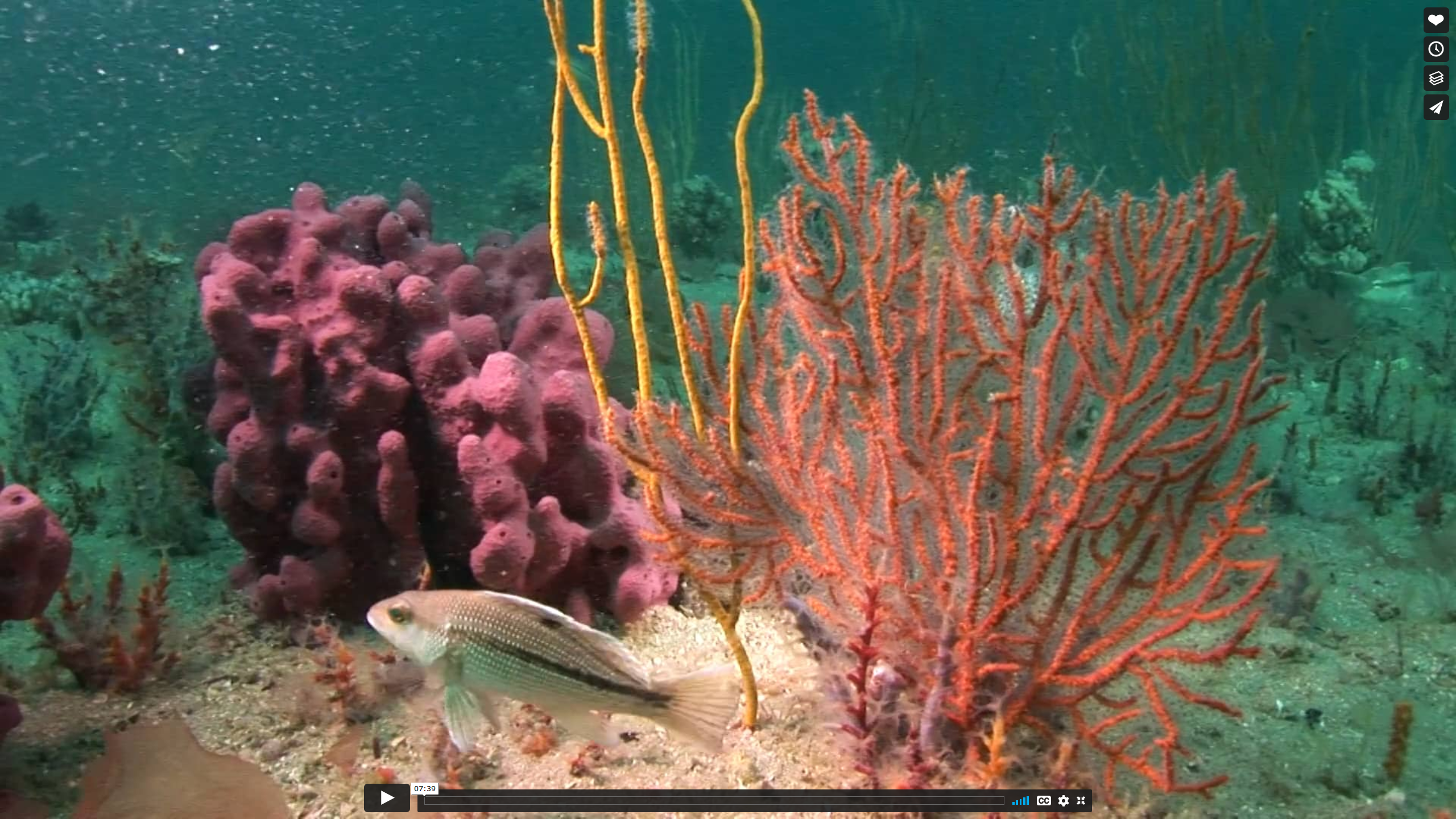
Gray's Reef 40th Anniversary
This video by Madlawmedia provides a historical account of the naming origination of Gray’s Reef National Marine Sanctuary. Gray’s Reef celebrated it’s 40th year of designation as a national marine sanctuary on January 16, 2021. Produced by Michelle Riley, Gray’s Reef National Marine Sanctuary, and narrated by Cathy Sakas, Founding Chair of Gray’s Reef National Marine Sanctuary Foundation.
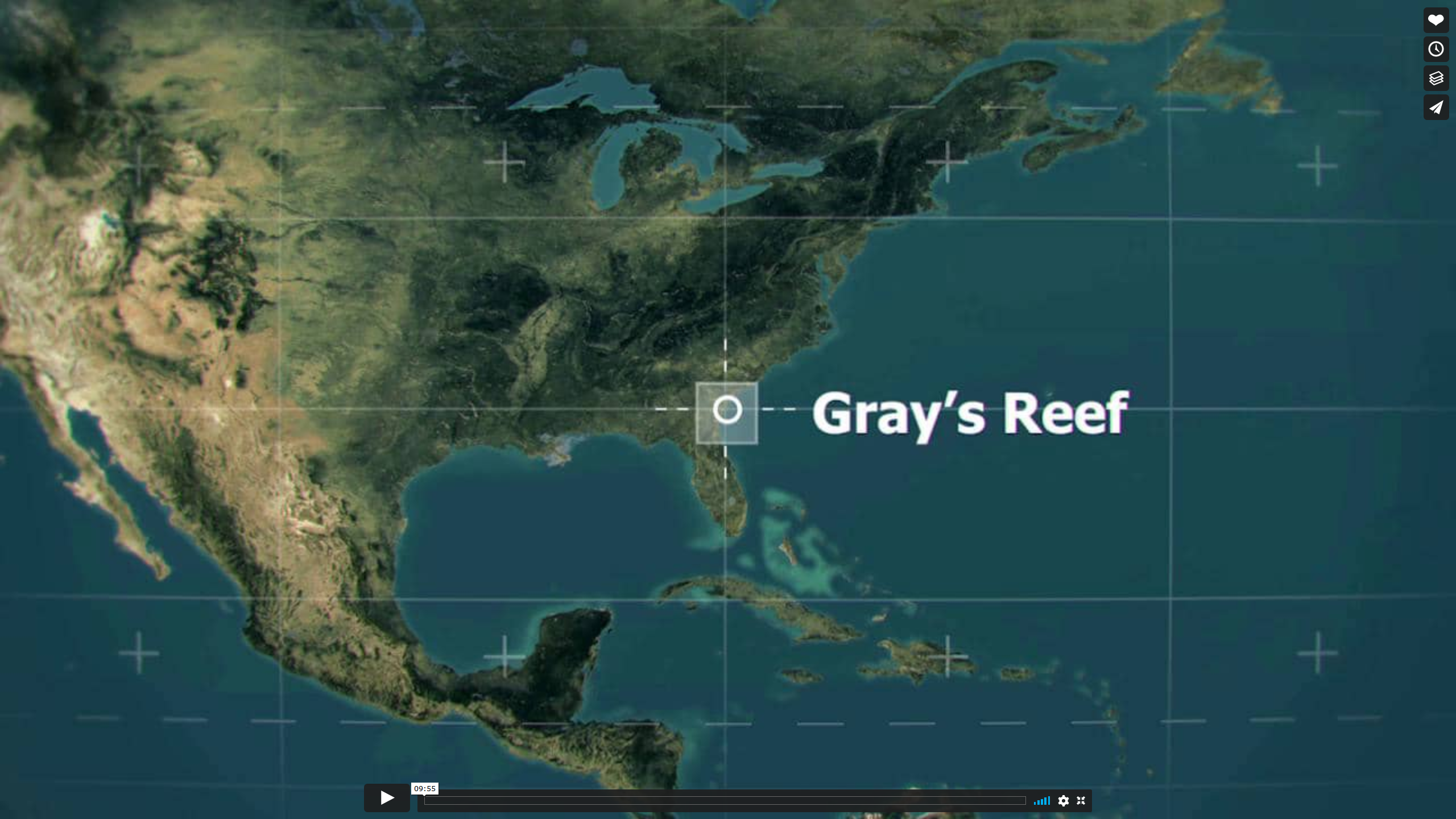
Gray's Reef Digital Field Guide by SCAD (Vimeo)
This Gray’s Reef Digital Field Guide is a production from visual effects students at the Savannah College of Art and Design was achieved with the cooperation of Gray’s Reef National Marine Sanctuary. The following students were responsible: Anaelisa Aburto, Zimei “Mia” Song, Zhe “Felix” Liu, Liz Feldstein, Andy Hernandez, Jie Meng, Livio Huang, Mark L’Heureux, Ziming Liu, Alex Padgett, Jon Alvord, Ziye Liu, Andrew Pellicer, Lu Chen, Ziqing “Tom” Meng, Rachel Start, Adam Sligar, Alex Corll, Steven Sanders, Rebecca McKee, Adam Koehler, Jacob Ilkka, Pat Manning, Kristen Eggleston, Natalie Greenhill, Heather Kennedy, Jordyn Black, Justin Lynch, Joe Phillips,Cat Soto, Christina Orcutt. Sound Design: Rachel Blackman, Dawn Lewis, Liam Farmer.

Southern Tides magazine
https://issuu.com/southerntidesmagazine.com/docs/southern_tides_may2020
Gray’s Reef is featured in every issue of Southern Tides magazine with the Around the Reef article written by the sanctuary’s communications team (page 9). This edition is the paddling-focused issue with tons of tips for on-water fun around the low country’s expansive wetlands, rivers, and beaches. Look for Cathy Sakas’ article on Ebenezer Creek (page 16) featuring Gray’s Reef Foundation Director and the Foundation Chairwoman’s journey through the historic natural landmark.

Capitol Hill Ocean Week
http://capitolhilloceanweek.org/
CHOW 2020 will focus on the global issue of protecting biodiversity. The breadth of life in our ocean is astounding. Building a sustainable global economy that protects nature is critical to people’s health and well-being. CapitolHillOceanWeek.org will be your hub for stimulating discussions. The National Marine Sanctuary Foundation is planning a full day of activities, including plenaries and concurrent breakout sessions on how science and technology are advancing our understanding of the marine environment, the role of protected areas in conserving biodiversity, and how to engage people as stewards.

Georgia Sea Grant Fellowship at Gray's Reef
https://gacoast.uga.edu/state-fellowship/
The Georgia Sea Grant State Fellowship Program provides a unique educational and professional opportunity to eligible graduate students who are interested in coastal and marine resources in Georgia, and the policy and management decisions affecting those resources.
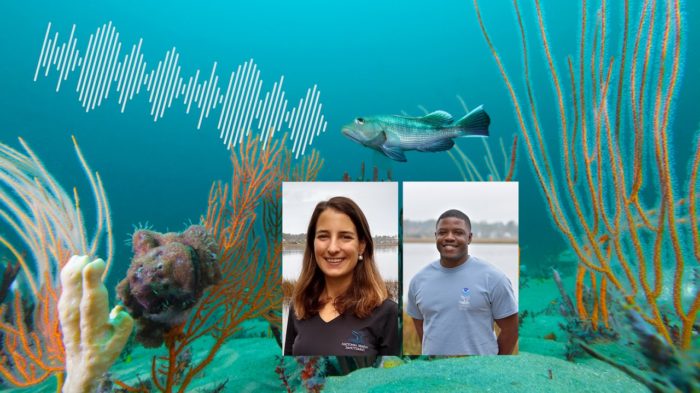
Exploring the Sounds of Grays Reef National Marine Sanctuary
http://www.exploringbytheseat.com/lesson/exploring-sounds-grays-reef-national-marine-sanctuary
Gray’s Reef Research Specialist Alison Soss and Georgia Sea Grant Fellow Kris Howard discuss the sanctuary, what sounds are heard underwater, and what it’s like to live onboard a NOAA research ship.
Explore by the seat of your pants, from anywhere! (Recorded webinar on YouTube)
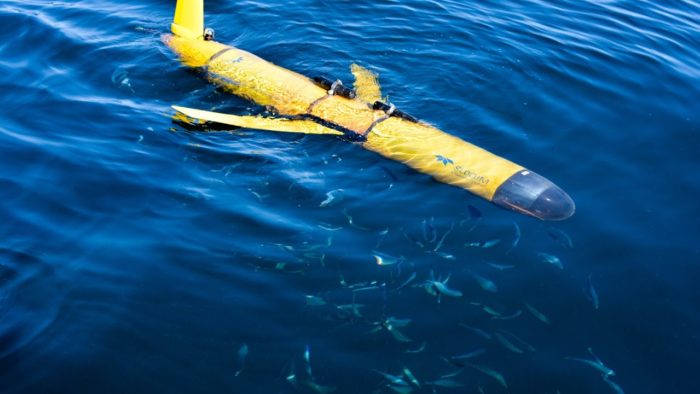
NOAA tracks whales by sound
https://www.ellsworthamerican.com/maine-news/waterfront/noaa-tracks-whales-by-sound/
By Shelley Dawicki, February 25, 2020, Northeast Fisheries Science Center
WOODS HOLE, Mass. — Two passive acoustic data collection efforts are underway in the Gulf of Maine to gather information on North Atlantic right whales. One will deploy fixed archival-acoustic recorders mounted on the ocean bottom for a specific period of time. The other will use autonomous underwater vehicles called gliders, equipped to record acoustic information and report it back in near real-time. (full article linked above)

Gray's Reef coming to River St.
By Ben Goggins, Posted Feb 10, 2020
The curved panels that I saw taking shape will be part of the Gray’s Reef Expo on May 23 and 24. It takes a village to make a reef, and the design and fabrication of the dramatic panels is a collaboration of many minds and hands: Gray’s Reef, Savannah Technical College, Re:Purpose Savannah. (full article linked above)
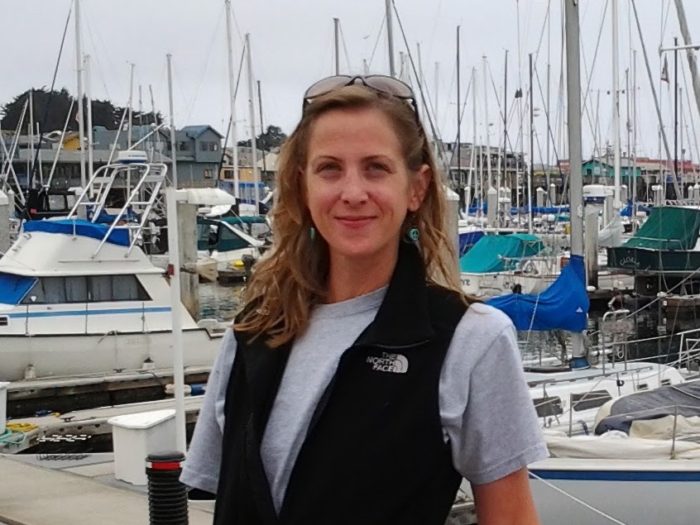
New Director for Gray's Reef Foundation Chapter
https://marinesanctuary.org/news/jody-patterson-chapter-director/
Savannah, Ga. – December 17, 2019 – The National Marine Sanctuary Foundation welcomes Jody Patterson as chapter director for the Gray’s Reef National Marine Sanctuary Foundation, a chapter of the National Marine Sanctuary Foundation.
Patterson, a longtime ocean conservation advocate, worked with Gray’s Reef National Marine Sanctuary as its events and volunteer coordinator from 2009-2019. She brings a wealth of experience in public engagement and science communication. Patterson will coordinate the chapter’s southeast regional MATE ROV Competition, an underwater robotics competition and education program, and support the chapter’s biggest fundraising event, the sustainable seafood gala A Fishy Affair. As chapter director, Patterson will raise funds for education, outreach and science programs that promote stewardship of Gray’s Reef National Marine Sanctuary and strengthen conservation. (full article linked above)
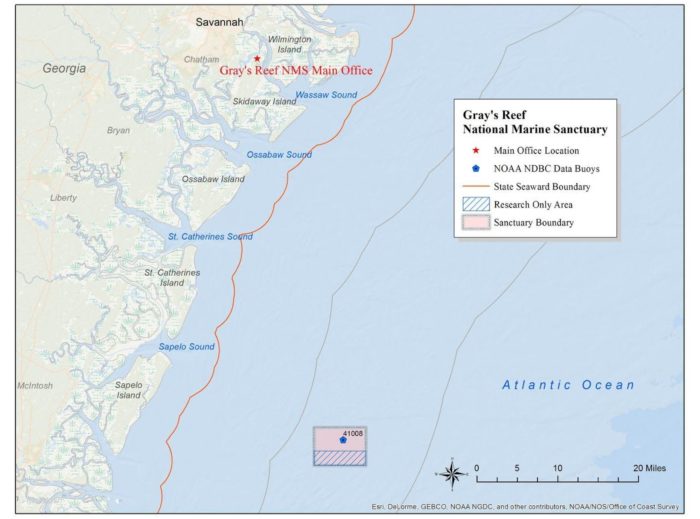
Georgia Southern at Gray's Reef
https://www.wtoc.com/2019/12/06/gsu-professor-helps-preserve-national-marine-sanctuary/
By Andrew Gorton | December 6, 2019
SAVANNAH, Ga. (WTOC) – Gray’s Reef has been federally protected since 1981 when President Jimmy Carter declared it a national marine sanctuary.
Despite being protected, some scientists are concerned about the potential impacts global climate change could have on the reef.
But a Georgia Southern professor has been working on conserving the reef for nearly 20 years.
(full article linked above)
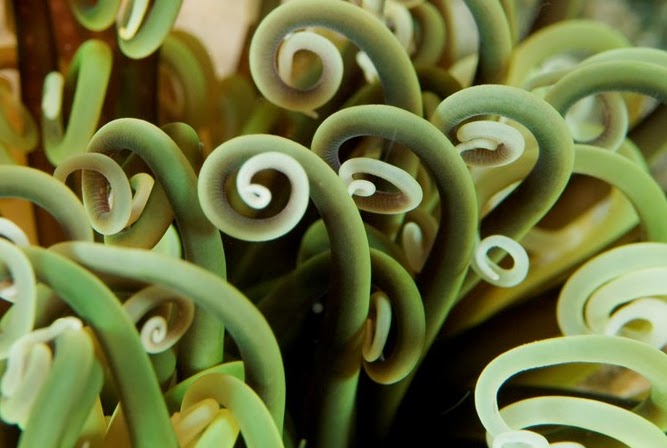
Gray's Reef is a global model
https://www.savannahnow.com/news/20191202/grays-reef-global-model
By Patrick Whittle The Associated Press, Dec 2, 2019
From the surface, these 22 square miles of water are unexceptional.
But dip beneath the surface — go down 60 or 70 feet — and you’ll find a spectacular seascape. Sponges, barnacles and tube worms cover rocky ledges on the ocean floor, forming a “live bottom.”
Gray’s Reef is little more than a drop in the ocean 19 miles off the Georgia coast, but don’t confuse size for significance. In one of his last official acts, President Jimmy Carter declared the reef a national marine sanctuary at the urging of conservationists who said its abundance of life was unique and worth saving for future generations. (full article linked above)
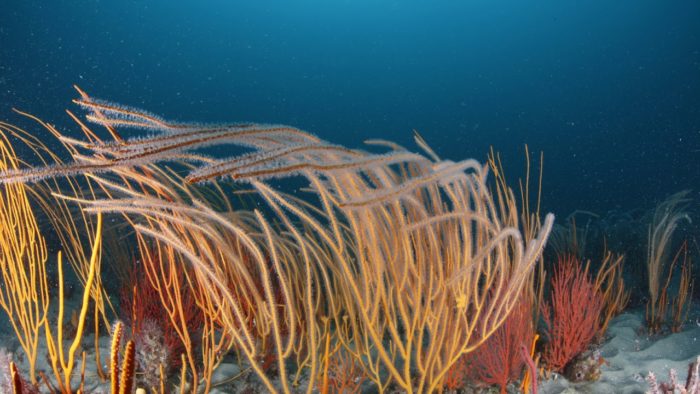
Ocean sounds from Gray's Reef
https://www.savannahnow.com/news/20190503/recordings-track-fish-shrimp-and-even-ghost-at-grays-reef
May 3, 2019
The abundant biodiversity at Gray’s Reef National Marine Sanctuary is being cataloged by sound in an ongoing study. (full article linked above)

